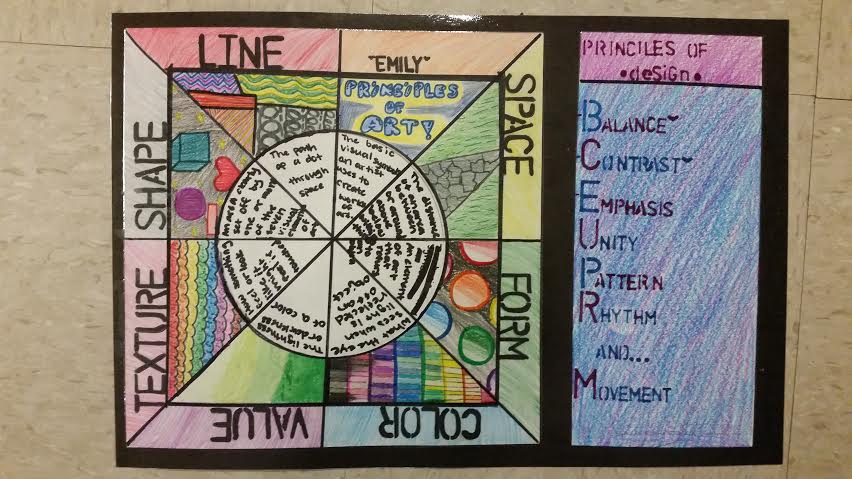


Variety is essential to keep rhythms exciting and active, and to avoid monotony. Rhythm is the repetition of visual movement – colors, shapes or lines. Graduation of size, and repeated shapes and size of related elements subtly leads the eye as well. For example, the eye will travel along an actual path such as solid or dotted line, or it will move along more subtle paths such as from large elements to little elements, from dark elements to lighter elements, from color to non color, from unusual shapes to usual shapes, etc. Movement ties the work together by relating the various components of a work together.īy arranging the composition elements in a certain way, an artist controls and forces the movement of the viewer’s eyes in and around the composition. Such movement can be directed along lines, edges, shape, and color within the work of art. This can be achieved by using repetition, rhythm, and action.

The purpose of movement is to create unity in the artwork with eye travel. Movement is the path our eyes follow when we look at a work of art. Radial Symmetry relates to images emitting from a point like spokes on a wheel or ripples from a pebble tossed into a pond. Examples of Radial Balance might appear in a circular arrangement or a spiral. In radial balance, the elements are arranged around a central point and may be similar. Radial, where elements on the page radiate from a central point. Examples of Asymmetrical Balance may incorporate odd numbers of elements or different sized elements and can be more informal and relaxed or more dynamic. In asymmetrical balance, the sides are different but still look balanced. Examples of Symmetrical Balance are often seen in more formal, static page layouts.Īsymmetrical where there are an odd number of elements or the elements are off-center. In Symmetrical balance, the elements used on one side of the design are similar to those on the other side. Symmetrical, where the page elements are centered or create mirror images. Balance is achieved not only by the distribution of text and images but the distribution of white space.īalance can be achieved in three ways, Symmetrical, Asymmetrical, and Radial. Balance can be achieved by placing a large element on one side of your design and several small elements on the other side. The elements don’t need to be the same size. If the design was a scale, these elements should be balanced to make a design feel stable. Balance is the distribution of the visual weight of objects, colors, texture, and space. Balanceīalance provides stability and structure to a design. Every artist’s goal should be to create a composition that is both unified and interesting to look at. With an idea, however, even though the principles may be forgotten and used intuitively, a beautiful composition may emerge. Without an objective, the most conscientious attention to balance, movement, emphasis, contrast, proportion, and space to create a unified composition, will result in uninteresting work. This is vital to the success of any artwork. To use the design principles effectively it is necessary that the artist have an idea to express or an objective in mind. Many artists use these principles more intuitively than intellectually but are nevertheless subconsciously aware of them and their impact upon a composition.īefore beginning any work of art every artist or designer needs to keep in mind that every composition starts with an idea. The graphic artist will use headlines, bodies of text, photos, illustrations, and clipart images to compose a page or Web site. Just as a fine artist arranges various components within a painting to create a pleasing composition, so it is with the graphic artist. Graphic artists compose their designs and page layouts using the same design principles the fine artists use.

All art, whether it is Web design, industrial design, fine art, sculpture, commercial art, or graphic art, is subject to the same principles of good design. The difference between a weak design and a strong one is completely dependent upon the artist’s knowledge of the design principles and how well he/she applies them.
DESIGN AS ELEMENT OF ART HOW TO
They are rules to help guide a designer how to arrange the various elements of a composition in relation to each other and the overall design.Ī fundamental, primary, or general law or truth from which others are derived: the principles of modern physics. The principles of good design are the tools used by an artist or designer to create an effective composition or design. Principles | Elements Principles of Design


 0 kommentar(er)
0 kommentar(er)
